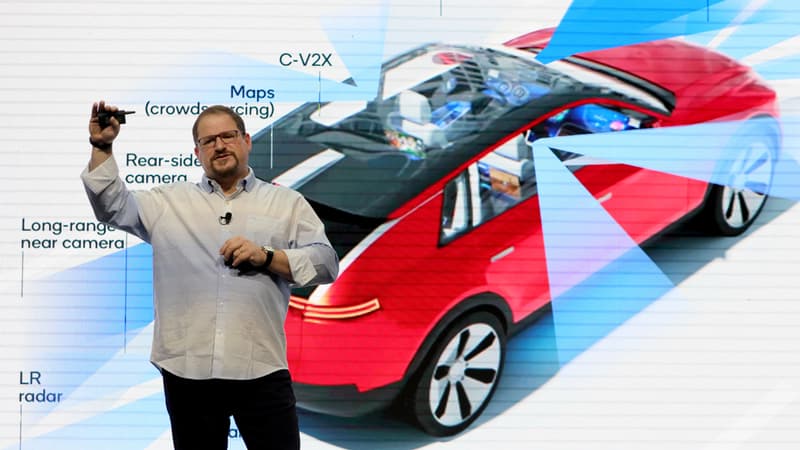Simultaneously manage the infotainment system (GPS, radio) but also the driving aids (speed regulator-limiter or lane following), this is what Qualcomm offers with Snapdragon Ride Flex. Presented this week at CES 2023 in Las Vegas (Nevada, United States), this new family of SoCs (System on a Chip, a kind of superchip that brings together the main functionalities of a computer) seems to bring the car of a smartphone on wheels. . And it also seems to put an advantage between the North American company and the historical car manufacturers.
One of the holy grails of 21st century motorsport is packing many features onto a single chip. And a real revolution in his way of designing a car. “Unlike a computer that has an OS to run all its software, a car has a card for each function where a processor will embed software that will run that function,” explains an industry expert. Which evokes a “plate of spaghetti”.
As cars have more and more features, the number of built-in chips and the connections between them has skyrocketed. With exponential R&D costs with each new development and increasingly complex cars. So centralization seems obvious to move to “software-defined vehicle” (a vehicle where everything is managed by software and can be updated regularly).
“It’s a bit like one ring to rule them all,” summarizes Guillaume Crunelle, partner in charge of the automotive industry at Deloitte.
“Manufacturers need to move from a decentralized logic, with separate systems for braking, infotainment, headlights, to a merger, bridging between functions and therefore bridging between different areas of expertise.” And bridges with a new experience, that of software, to develop an operating system that will manage all the functionalities in parallel without fail, for obvious security reasons.
The only one that offers this type of architecture today is called Tesla. Historic builders seek their strategy. At the end of November, Renault announced a partnership with Qualcomm to develop its future vehicles.. Qualcomm intends to invest in Ampère, the manufacturer’s spin-off dedicated to electric and connected cars. The diamond brand also works with Google. Android Automotive operating system is like this aboard the new Mégane For more than a year.
Some manufacturers are trying to develop everything in-house, like Volkswagen, to dominate this new area from start to finish, a strategy that has so far been unsuccessful at the German group. Honda has chosen a novel approach. At CES, the Japanese manufacturer unveiled Afeela, the joint venture that he created with Sony to launch an electric car. Car that will be based on Qualcomm’s digital chassis.
This strategic choice between controlling everything in-house and collaborating with specialists is a complex financial equation. Thus, some experts see the car as the world of the telephone fifteen years ago: each brand then developed the device and the operating system that accompanies it. Today, only two operating systems cohabit after a progressive choice in the sector and a desire to limit R&D costs.
A solution that could appeal to some manufacturers? Not necessarily, sums up Guillaume Crunelle: “For manufacturers, the real question remains the value of the car: where does it fit in? If the battery represents 40% of the value, the software also 40%, whether they stay or not It doesn’t develop either?”
Source: BFM TV


